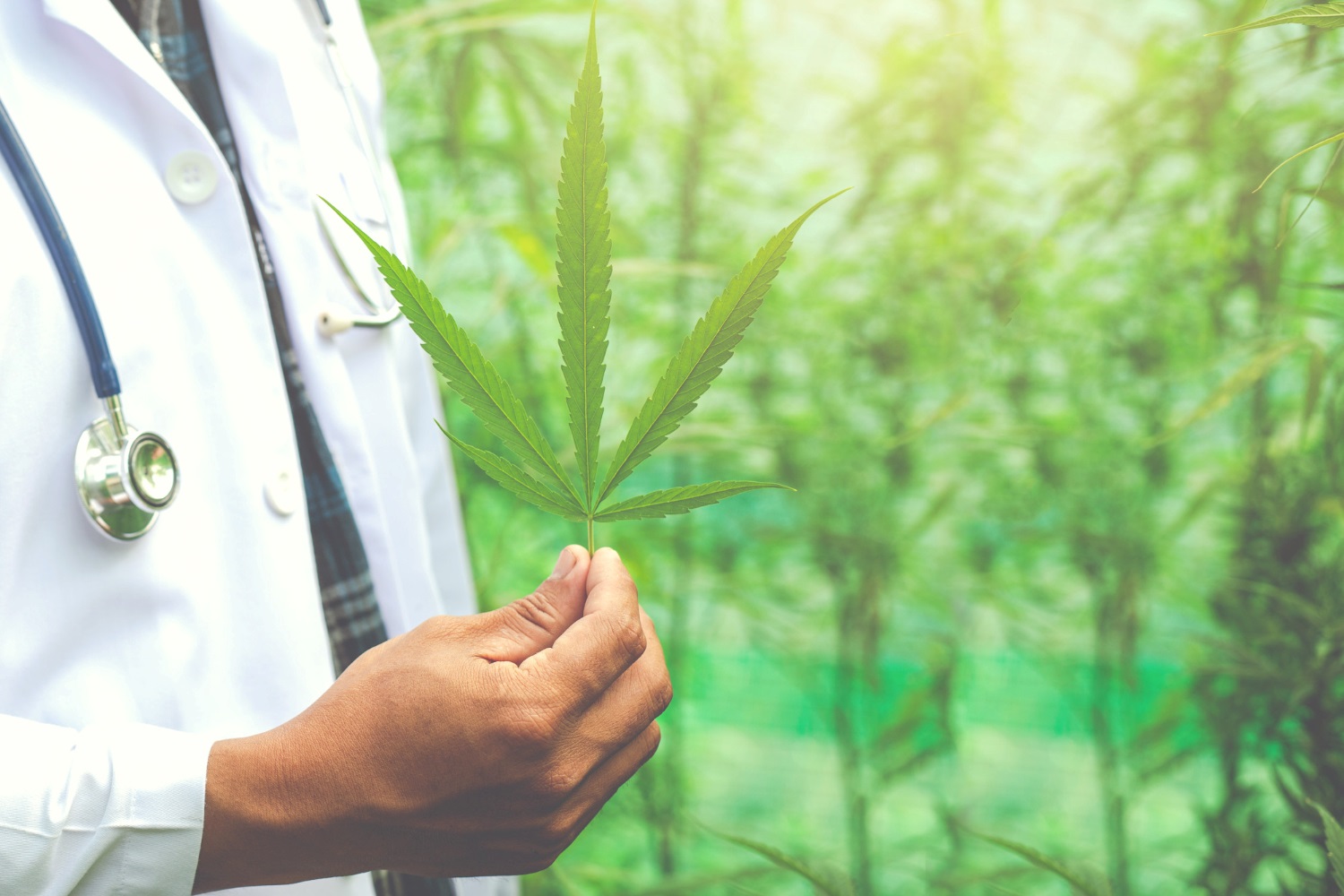

Sponsored Ads

Sponsored Ads

Cannabis, pot, grass, ganja, dope, weed, Mary Jane, and doobie. These are marijuana’s numerous nicknames. A 2018 Gallup survey states that 66% of Americans, about 2 in 3 people, are in favor of legalizing marijuana. This brings us to the question, is marijuana really as dangerous as the authorities put it, or is it as safe as the proponents say?
According to the Controlled Substances Act of 1970 (CSA), the use and possession of cannabis are illegal as it is classified as a Schedule I substance with a high chance of abuse and no possible medical use.
But times are changing.
As of today, 24 states in the US have legalized marijuana, either for medicinal or recreational use. And 27 states have fully or partially decriminalized marijuana possession offenses. Although the main voices of support come from Democratic politicians, there has been some show of solidarity from Republicans as well.
On October 7, 2022, US President Joe Biden made an announcement that pardons would be issued to everyone who is convicted of the federal crime of marijuana possession. The announcement was made with the intention of eliminating roadblocks for thousands of Americans who were denied educational opportunities, jobs, and housing due to their criminal records.
The advocates of marijuana are of the opinion that marijuana isn’t as harmful as alcohol. There are studies that mention the medicinal benefits of marijuana in treating chronic pain, psychological conditions like depression, post-traumatic stress disorder (PTSD), social anxiety, and epilepsy. There is also evidence that oral cannabinoids are useful in treating nausea and vomiting caused by chemotherapy.
Those against marijuana say weed legalization is a major public health and safety risk. They state that the data that proves the effectiveness of marijuana in medical conditions such as HIV/AIDS, epilepsy, and chemotherapy-associated vomiting is very limited and anecdotal.
Another point the opponents make is that marijuana is often contaminated with fungus or mold. This is because the plant and its by-products are often grown in dispensaries that may or may not follow the state’s regulatory standards.
States Where Marijuana is legal
Where is weed legal? What is the jail sentence for possession? Can I go to jail for possession? How much weed can I carry safely? Consequences of weed possession? These are some of the questions that Google receives on a daily basis. The following list will clear that doubt. Given below is the list of 24 US states with legal weed.
- Alaska: Alaska legalized recreational use of marijuana in February 2015. Adults over 21 years of age can hold and give up to one ounce of marijuana. An adult can also grow up to 6 marijuana plants, but only 3 of those can be mature. Also, it is illegal to consume drugs in public.
- Arizona: Proposition 207 of Arizona, passed in November 2020, permits adults over 21 years of age to use, possess, and transport 5 grams or less of marijuana concentrate or 1 ounce or less of marijuana. The Arizona Department of Health Services (ADHS) is responsible for licensing and regulating retail sales, growth, and testing facilities in the state.
- California: California legalized marijuana in November 2016. Adults over 21 can purchase, carry, or give away up to 8 grams of concentrated cannabis and up to an ounce of cannabis. Adults can grow up to 6 cannabis plants. Smoking or ingesting the substance in public places is illegal.
- Colorado: The legalization of marijuana in Colorado happened in January 2014. Adults who are 21 or older can carry or give up to an ounce of marijuana. Each adult can cultivate up to 6 plants, but the number of plants allowed to grow is restricted to 12, irrespective of the number of residents. Public consumption of marijuana is illegal.
- Connecticut: Connecticut legalized the use of marijuana in July 2021. Adults over 21 are permitted to carry 1.5 ounces of marijuana and up to 5 ounces at home or in a vehicle. Along with the legalization, the new law also expunged existing low-level marijuana offenses.
- Delaware: Marijuana was legalized in Delaware in April 2023. The legalization bill states that residents older than 21 can carry up to 1 ounce of marijuana. The state prohibits residents from growing cannabis and has released a separate bill to create the state’s own recreational marijuana industry.
- Guam: In April 2019, the Governor of Guam signed a bill legalizing recreational cannabis. According to the bill, adults over the age of 21 can possess up to an ounce of marijuana and cultivate up to 6 plants, out of which only 3 can be mature.
- Illinois: As of January 2020, Illinois residents over 21 are legally allowed to carry 5 grams of concentrated cannabis and products that contain a maximum of 500 milligrams of THC. Non-Illinois residents can possess half of the aforementioned amounts when in the state. Public consumption is still illegal.
- Maryland: Starting July 1, 2023, cannabis will be legal for all Maryland residents. Adults who are older than 21 can possess up to 12 grams of concentrated cannabis or any cannabis product that does not have more than 750 mg of THC and 1.5 ounces of cannabis flower.
- Maine: Marijuana has been legal in Maine since November 2016. According to the law, residents over 21 years old can use and carry up to 2.5 ounces of marijuana. They can also cultivate up to 6 flowering plants and 12 immature plants.
- Massachusetts: Cannabis was legalized in Massachusetts in November 2016. Adults over 21 years of age can hold up to 1 ounce in person and up to 10 ounces at home. Growing cannabis at home is allowed, and each resident can grow up to 6 plants per person. Homes with 2 or more residents can only raise a maximum of 12 plants.
- Michigan: Michigan legalized the use of marijuana in November 2018. Residents over the age of 21 can consume, cultivate, and carry marijuana. The passed bill permits residents to carry 2.5 ounces of marijuana and 15 grams of concentrated marijuana. Also, residents can grow up to 12 plants per household.
- Missouri: In November 2022, a bill was passed legalizing marijuana. The bill states that consumers older than 21 can carry up to 3 ounces of marijuana and increases patients’ monthly quota from 4 to 6 ounces
- Montana legalized the use of marijuana in January 2022. Adults who are over 21 can possess up to 1 ounce of marijuana. Public consumption of marijuana, even medicinal, is prohibited.
- Nevada: Marijuana has been legal in Nevada since January 2017. Nevada residents over 21 years of age can carry up to an eighth of an ounce of concentrated marijuana and up to 1 ounce of marijuana. Adults can cultivate up to 6 plants or 12 plants in a single household. Consumption in a car or in public places remains illegal.
- New Mexico: New Mexico made the use of marijuana legal in April 2022. The bill passed by Governor Michelle Lujan Grisham says that adults older than 21 can carry up to 2 ounces outside their homes. They can also grow 12 plants per household or 6 plants per person.
- New Jersey: The bill for legalization was approved in November 2020, and licensed recreational sales began in April 2021. According to the law, adults over 21 years of age can possess 1 ounce of dried flower, 5 grams of marijuana concentrate, resins, and oils, and up to 1 gram of edibles.
- New York: New York Governor Andrew Cuomo passed the bill for legalization in March 2021. The bill permits individuals over 21 to carry up to 3 ounces of marijuana and 0.85 ounces of concentrated marijuana. In terms of growing, an adult can cultivate 12 plants in a household, including a maximum of 3 mature and 3 immature marijuana plants.
- Oregon: Oregon legalized the use of marijuana in July 2015. Oregonians older than 21 can have up to 8 ounces at home and carry 1 ounce of marijuana in public. Residents can also hold up to 16 ounces of marijuana in solid form and up to 72 ounces in liquid form. An adult can grow up to 4 cannabis plants.
- Rhode Island: Rhode Island legalized the use of cannabis in May 2022. Residents over 21 years of age can grow up to 3 plants in a private residence and hold up to 1 ounce of cannabis.
- Vermont: Vermont made the use and possession of marijuana legal in January 2018. According to the bill, residents older than 21 can hold up to an ounce of marijuana and be allowed to cultivate 2 mature and 4 immature plants per household.
- Virginia: Virginia legalized all forms of marijuana use in July 2021. The passed law states that residents over the age of 21 can grow up to 4 plants per household and carry up to an ounce of marijuana.
- Washington: The use of marijuana was legalized in Washington state in November 2012. Any adult over the age of 21 can consume and carry up to an ounce of marijuana, up to 16 ounces in edible form (solid), up to 72 ounces in liquid form, and up to 7 grams in marijuana concentrates. Public consumption is illegal, and residents cannot grow their own plants.
- Washington, D.C: Marijuana consumption was legalized in Washington, D.C., in November 2014. The bill states that adults over 21 can possess up to 2 ounces of marijuana and share up to 1 ounce with another person. Adults are allowed to cultivate 3 mature plants and a total of 6 plants.
Legalization at the Federal level
Though 24 out of the 50 states are legal weed states, marijuana is still illegal at the federal level. It is classified as a Schedule I drug under the Controlled Substances Act. This means that the government considers marijuana a substance with medicinal purposes and a high chance of abuse.
The 24 states listed in the article have legalized marijuana by going against the Federal government. This has created a strained relationship between the states’ rights to form their own laws and the Federal government’s authority.
The Cole Memorandum
Issued under the presidency of Barack Obama, the Cole memorandum stated that the Justice Department would not enforce the Federal government’s marijuana prohibition on states that have legalized it. However, this was applicable only if the respective state governments had strict regulatory and enforcement systems in place to manage the possession, cultivation, distribution, and sale of marijuana.
The memo was named after United States Deputy Attorney General James M. Cole.
However, the Cole Memorandum was rescinded by Jeff Sessions 2018, the Attorney General during the then-Trump regime.
The Role of the Public
The general American population has a generally positive reaction to weed legalization. A CBS News/YouGov poll conducted in April 2022 said that over 60% of the population wants marijuana legalized on a Federal level. They are also of the notion that they want marijuana legalized in their states as well.
A November 2021 Gallup poll states that 68% of people are pro-marijuana. This is a massive hike when compared to 12% in 1969, 31% in 2000, and above 50% after 2013.
The Road Ahead
The current number of states where weed is legal stands at 24, which is almost half of the total states in the US. The opinion of the general public is positive as well. Though legalization on a Federal level is unlikely in 2023, the number of states flashing the green signal seems to be increasing. This appears to be a good sign for the cannabis industry.
Sponsored Ads

Sponsored Ads

